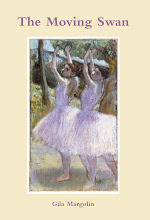My dear Friends
'The other side of Israel' is the title of a book by Susan Nathan, a Jewish woman who, after settling in Tel Aviv under the Law of Return, goes to live in Tamra, an Arab-Israeli town of some 25,000 Muslims. Her intention is to show people that it is possible to live together, but, in the course of doing so, she loses all her Jewish friends.
It is a courageous book - we learn throughout of the injustices the Arabs have suffered, how 400 villages were appropriated(and most destroyed) in 1948, during the War of Independence, when the Arabs were driven out to other Arab countries, some of whom welcomed them and some of whom did not.
The main thrust of the book centres on how Arab Israelis, supposedly part of Israel and who can claim rights to citizenship, are treated as second class citizens today. Some are living in what have been termed 'illegal villages' and therefore have no rights to running water and electricity.
Susan Nathan describes the 'Zionist myth', Israel as a land of milk and honey where actually injustice is perpetrated and the Arabs are also being stripped of their history, culture and sense of personal identity. The solution is to face up to the 'Nakba', the disaster that befell them in 1948, and to get the Jewish community to do the same. She also describes the cruel treatment the Palestinians are suffering at the hands of the Israeli army in the occuppied territories, a situation where some young Israelis are refusing to serve.
For me the religious dimension was not given any credibility, the concept that God has been gathering in the exiles in a fulfillment of Biblical prophecy, a concept which Susan Nathan feels has been exploited by religious Jews and others. The concept is not meant to mean that people who have been on the land for centuries should have their land stolen amongst other things, as this betrays the concept of justice, which pervades the Old Testament on which the Jewish religion is based. And there have been periods in the Land in which Jews, Christians and Muslims have lived in harmony.
In 1989 I returned to Israel after an absence of 21 years to do a summer programme at the Hebrew University in Jerusalem. On the course I met an Arab girl living in the US and we spent a day together in the Old City. It was the beginning of the Intifada. As we sat together high up on the old walls, we could hear gunfire in the background. Suddenly she turned to me and said: 'I believe you have a right to this land.'
Susan Nathan mentions the community of Neve Shalom/Wahaat al Salaam (Oasis of Peace) in which Arabs and Jews live together on land given by the Catholic Church. I visited the community in 1989 and had the privlege of meeting Fr Bruno Hussar, the Catholic priest from an Egyptian Jewish family, who founded it. He described how the Jews were being brought back to the Land and then said 'I'm a Catholic priest, and a Jew and I love the Arabs, so we must wear our labels lightly.'
Susan Nathan skilfully and movingly describes other complexities in Israel, for example amongst the different Jewish groupings and makes it very clear that she retains a love for her fellow Jews, although she has made new family ties in the Arab village in which she now lives. I take a more objective approach to both sides, but then I don't live in the Land and I am a Christian, unlike Susan. With the love of God as the dynamic for resolution, hopefully The Little Sisters of Joy can one day spread the peace of Christ that Pope John Paul II did on his visit to Israel/Palestine some years ago.
Shalom/Salaam
Sister Gila
Fr Bruno Hussar's autobiography is published under the title of 'Quand la nuee se leve' or 'When the cloud rises'
Subscribe to:
Post Comments (Atom)



2 comments:
This is a very interesting review of the situation in the Holy land. Perhaps we should know more about the situation there, with all its failures and struggles. i hope to read this book soon
Thanks for this review, Gila, I must read the book.
Post a Comment